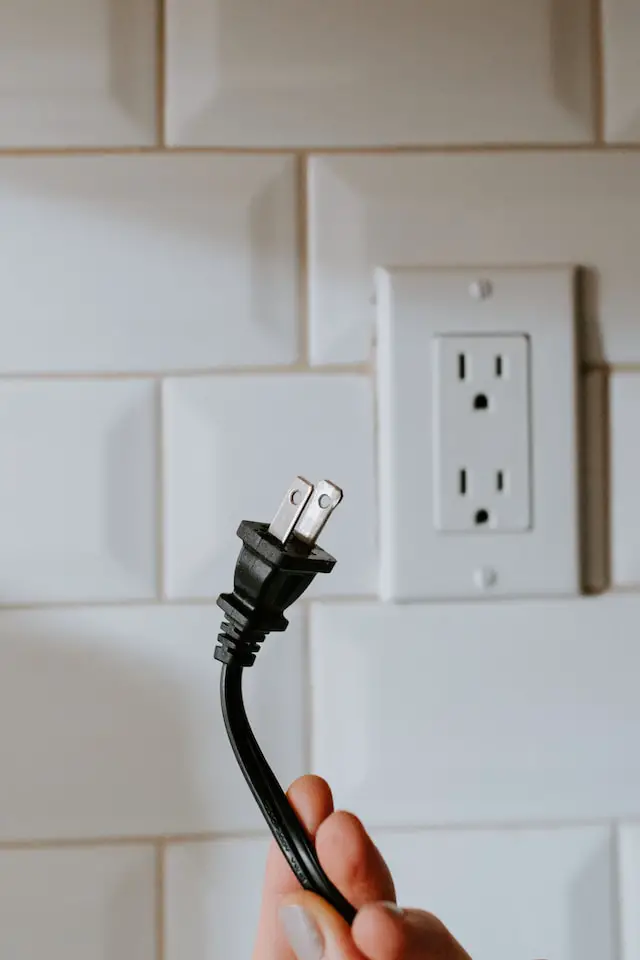Insulators and conductors are two types of materials that have different properties when it comes to the flow of electricity. Insulators prevent or limit the flow of electrical current while conductors allow it to pass through easily. The key differences between them lie in their atomic structure, ability to hold electrons and transfer energy. A material with a completely filled outer shell is an insulator whereas a material with partially filled outer shells makes for an excellent conductor.
What is an insulator?
(Photo by Tobias Mockenhaupt on Unsplash )

An insulator is a material that does not easily allow electricity to flow through it. It can be thought of as an obstruction or barrier to the movement of electrical charge.
Insulators have high resistance, which means they prevent electric current from flowing freely. This is because they have tightly bound electrons in their atoms, which makes it difficult for them to move and carry charge.
Some common examples of insulators include rubber, plastic, glass, ceramic materials such as porcelain and mica, and air itself (at normal atmospheric pressure). These materials are often used in electrical equipment to provide insulation between conductors and protect against electric shocks.
One important property of insulators is that they can also act as thermal barriers by preventing heat from transferring across them. For this reason, they are commonly used in construction materials such as foam insulation or fiberglass batts.
Insulators play a critical role in ensuring safe and efficient operation of electrical systems while also providing thermal protection for buildings and other structures.
What is a conductor?
(Photo by Kelly Sikkema on Unsplash )

A conductor is a material that permits electricity to flow through it easily. In conductors, the outermost electrons in each atom are weakly held and can move freely from one atom to another. This allows for the transfer of electric charge or current.
Metals such as copper, aluminum, silver, and gold are great conductors of electricity due to their atomic structure. They have free electrons which move around the structure when exposed to an electrical field.
Conductors play a vital role in electrical engineering because they allow for easy movement of electric charge without much loss. The low resistance offered by these materials makes them ideal for transferring power over long distances with minimal energy wasted as heat.
In addition to metals, other materials like graphite and saline solutions conduct electricity too but not as efficiently compared to metals. However, some substances like mercury exhibit unique properties that make them highly efficient at conducting electric currents making them useful in specialized applications like thermometers and electrical switches among others.
Insulators Vs. conductors – Key differences
Insulators and conductors are two fundamental components of electrical systems. Both materials have different properties that make them useful in various applications.
The key difference between insulators and conductors is their ability to allow the flow of electricity. Insulators do not allow the flow of electric charges, while conductors permit it. This property affects how they handle energy transfer, which determines their application areas.
Another notable difference is the response to temperature changes. Insulators tend to resist thermal conductivity, meaning they cannot transmit heat efficiently. In contrast, conductors can easily transfer heat due to their high thermal conductivity.
Electrical resistance is also an important factor when comparing these materials. Conductors offer low resistance compared to insulators since they contain free electrons that readily move under electric fields.
Cost plays a significant role in determining which material you should use for your application needs. Conductive materials like copper or silver are generally expensive than non-conducting ones such as rubber or plastic.
Understanding these differences will help you choose the right material for your specific project requirements and ensure efficient energy transfer without any wastage or damage caused by overloading circuits with inappropriate insulation levels or inadequate conduction capabilities.
How do insulators and conductors work?
Insulators and conductors work in opposite ways. Insulators prevent the flow of electricity, while conductors allow it to move freely. The difference between them lies in how they handle electrons.
In insulators, the electrons are tightly bound to their atoms, making it difficult for them to move around. This means that when voltage is applied, there isn’t enough energy for the electrons to break free and travel through the material. As a result, no current can pass through an insulator.
Conductors have loosely held outer electrons that are free to roam within the material. When a voltage is applied across a conductor, these mobile electrons will be pushed by an electric field towards one end of the conductor or another; this movement creates electrical current.
The ability of materials to either resist or conduct electrical current has various applications in our daily lives – from providing safe insulation on electrical wires and cables (using rubber or PVC)to enabling efficient power transmission over long distances with high-conductivity metals such as copper or aluminum.
It’s important to remember that not all materials fit neatly into these categories – some substances known as ‘semiconductors’ share properties with both insulators and conductors depending on certain conditions like temperature or light exposure.
Examples of insulators and conductors
Examples of insulators include rubber, plastic, glass, and air. These materials have high resistance to the flow of electric current because they do not conduct electricity easily.
Rubber is commonly used as an insulator in electrical wires and cables. Plastic is another popular choice for insulation due to its durability and low cost. Glass is also a good insulator that can withstand high temperatures without melting or deforming.
Air is an excellent natural insulator that surrounds us all the time. The tiny gaps between air molecules make it difficult for electrons to move through it, which makes it a poor conductor of heat and electricity.
On the other hand, examples of conductors include copper, aluminum, gold, silver, and iron. These metals are known for their ability to transport electric charge with minimal resistance.
Copper has been widely used as a conductor in electrical wiring due to its excellent conductivity and corrosion resistance properties. Aluminum is another common metal conductor that offers lower cost than copper but slightly lower conductivity levels.
Silver is one of the best conductors available but comes at a higher price point compared to other metals like copper or aluminum. Gold has similar benefits as silver in terms of conductivity but even more expensive than silver itself!
What is a semiconductor?
A semiconductor is a material that has properties in between those of insulators and conductors. In other words, it can behave as either an insulator or a conductor depending on the conditions. Semiconductors are commonly used in electronic devices such as transistors, diodes, and integrated circuits.
The unique behaviour of semiconductors stems from their ability to control the flow of electric current through them by changing their conductivity. This is achieved by doping the semiconductor with impurities such as boron or phosphorus atoms which add free electrons or holes respectively to its structure.
Semiconductors have revolutionized modern electronics due to their ability to amplify signals and switch electrical currents on and off rapidly. They form the backbone of various technological advancements including smartphones, computers, solar panels, LED lighting systems among others.
Semiconductor technology continues to advance at a rapid pace with researchers constantly discovering new materials with even better performance characteristics than traditional silicon-based ones. This makes semiconductors one of the most important classes of materials in modern science and technology today.
Is the human body a conductor?
The human body is often considered a conductor due to its ability to conduct electrical current. This is because the human body contains water and electrolytes, which are good conductors of electricity.
However, it’s important to note that the conductivity of the human body varies depending on various factors such as skin moisture, contact area, and frequency of the electric field. The resistivity of our skin can range from 1kΩcm in dry conditions up to 100Ωcm when wet.
In addition, different parts of our bodies have different levels of conductivity. For example, nerve cells are excellent conductors while fat tissue has poor conductivity.
While we may possess some level of conductivity in our bodies, it’s not enough for us to be used as efficient power sources or energy transfer mediums. In fact, exposing ourselves to high levels of electrical current can lead to serious injury or even death due to electrocution.
While our bodies do possess some level of conductivity, it’s best not to rely on them for any practical applications involving electricity.
Featured Image By – Photo by Dids








